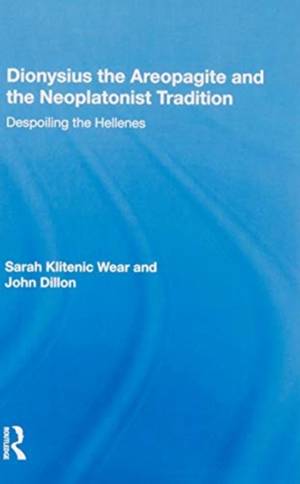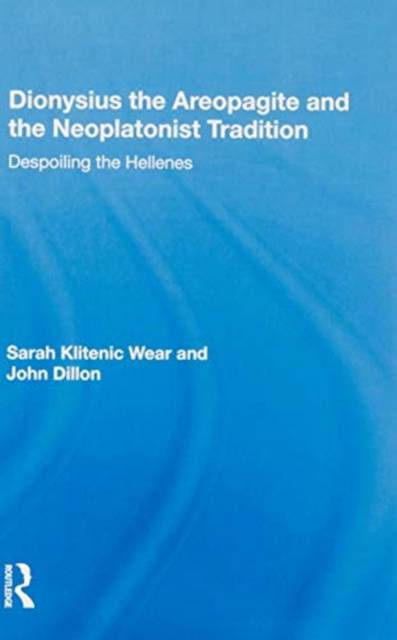
- Afhalen na 1 uur in een winkel met voorraad
- Gratis thuislevering in België vanaf € 30
- Ruim aanbod met 7 miljoen producten
- Afhalen na 1 uur in een winkel met voorraad
- Gratis thuislevering in België vanaf € 30
- Ruim aanbod met 7 miljoen producten
Zoeken
Dionysius the Areopagite and the Neoplatonist Tradition
Despoiling the Hellenes
Sarah Klitenic Wear
Hardcover | Engels
€ 195,95
+ 391 punten
Uitvoering
Omschrijving
'Dionysius the Areopagite' is arguably one of the most mysterious and intriguing figures to emerge from the late antique world. Writing probably around 500 CE, and possibly connected with the circle of Severus of Antioch, Dionysius manipulates a Platonic metaphysics to describe a hierarchical universe: as with the Hellenic Platonists, he arranges the celestial and material cosmos into a series of triadic strata. These strata emanate from one unified being and contain beings that range from superior to inferior, depending on their proximity to God. Not only do all things in the hierarchy participate in God, but also all things are inter-connected, so that the lower hierarchies fully participate in the higher ones. This metaphysics lends itself to a sacramental system similar to that of the Hellenic ritual, theurgy. Theurgy allows humans to reach the divine by examining the divine as it exists in creation. Although Dionysius' metaphysics and religion are similar to that of Iamblichus and Proclus in many ways, Pseudo-Dionysius differs fundamentally in his use of an ecclesiastical cosmos, rather than that of the Platonic Timaean cosmos of the Hellenes. This book discusses the Christian Platonist's adaptation of Hellenic metaphysics, language, and religious ritual. While Dionysius clearly works within the Hellenic tradition, he innovates to integrate Hellenic and Christian thought.
Specificaties
Betrokkenen
- Auteur(s):
- Uitgeverij:
Inhoud
- Aantal bladzijden:
- 152
- Taal:
- Engels
Eigenschappen
- Productcode (EAN):
- 9780815388579
- Verschijningsdatum:
- 20/11/2017
- Uitvoering:
- Hardcover
- Formaat:
- Genaaid
- Afmetingen:
- 156 mm x 233 mm
- Gewicht:
- 276 g

Alleen bij Standaard Boekhandel
+ 391 punten op je klantenkaart van Standaard Boekhandel
Beoordelingen
We publiceren alleen reviews die voldoen aan de voorwaarden voor reviews. Bekijk onze voorwaarden voor reviews.











